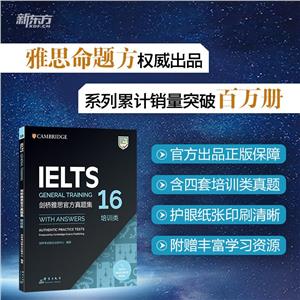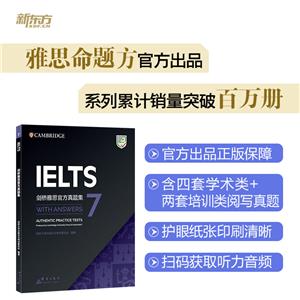
作者:吴启金著
页数:340 页
出版社:中国金融出版社
出版日期:2009
ISBN:9787504951397
电子书格式:pdf/epub/txt
内容简介
《圆梦剑桥》深入分析了制度变迁与经济发展的关系,批判了“休克疗法”的不可取性,论述了“一步到位”的产权私有化和经济金融自由化绝不是发展中国家经济转型可利用的最佳途径,阐明了中国的发展思路和发展理念与主流经济学鼓吹的“华盛顿共识”存在着本质的不同,解析了渐进式的改革开放战略是我国取得成功的关键,也是我们的发展实践对当代发展理论的重大创新。
全书总结了政府主导型的发展战略是发展中国家实现经济社会和谐发展的主要路径,提出了在经济全球化日益加深的背景下,发展中国家的政府和企业需要重新构思发展战略,与时俱进,开拓创新,依据各自的国情设计适合自己的发展模式。只有顺应时代,发展中国家才能充分发挥其在生产要素和资源禀赋方面的比较优势,进而实现“后发优势”。
作者简介
吴启金,剑桥大学博士毕业,现任中国进出口银行交通运输融资部副总经理。 作者先后毕业于安徽大学(1989)和上海机械学院(1992)。2002年获英国“志奋领”奖学金入剑桥大学达尔文学院读经济,2003年7月获发展研究专业硕士学位,同年8月被推荐到土地经济系读博士,后转入耶稣学院,2006年7月获发展经济学方向哲学博士学位。2009年,荣膺“雅思考试20年20人”。作者曾在机械行业工作多年,1995-1996年度被评为“机械工业部优秀公务员”。曾在产业经济、金融和科教研究类刊物上发表论文(含译作)百余篇。
相关资料
插图:The new institutional economists argue that the general equilibrium in the freemarket theory can hardly be achieved in reality. The variations in the performance ofeconomies either historically or contemporarily are too expansive to be explained by themodel of the free market economics. It is argued that if the model were true, self-adjusting market forces would in the long run remove existing performance disparities,or would reasonably narrow the gaps.New institutional economists look into the constant parameters of the free markettheory for the causes of disparity and turn them into variables for economic performanceanalysis. They find that the free market model is based on implicit assumptions of aneconomic kingdom with efficient property rights and zero-transaction costs. But such akingdom is revealed only to be fictional or idealistic. Market exchange takes propertyrights for granted, but property rights are frequently inefficient as a result of incompletemarket or political intervention. To new institutional economists, institutions matterbecause the world is full of transaction costs. By definition, the contents of transaction costs are specified as a residual of thoseof production cost. All the costs in the real world except those specified in theproduction function of the free market economics are included in transaction costs.Therefore, Oliver Williamson, who is mainly concerned with transaction costs at thelevel of firms, specifies the contents of transaction cost as the costs related to a contractboth ex ante and expost. On the other hand, Douglass North (1990:28 ), whoconsiders transaction costs mainly at the level of national economy, specifies thecontents of transaction costs as all the costs incurred in ” defining, protecting andenforcing the property rights to goods (the right to use, the right to derive income fromthe use of, the right to exclude, and the right to exchan
本书特色
本书深入分析了制度变迁与经济发展的关系.批
判了“休克疗法”的不可取性,论述了”一步到位”
的产权私有化和经济金融自由化绝不是发展中国家经
济转型可利用的最佳途径,阐明了中国的发展思路和
发展理念与主流经济学鼓吹的“华盛顿共识”存在着
本质的不同.解析了渐进式的改革开放战略是我国取
得成功的关键,也是我们的发展实践对当代发展理论
的重大创新。
全书总结了政府主导型的发展战略是发展中国家
实现经济社会和谐发展的主要路径,提出了在经济全
球化日益加深的背景下,发展中国家的政府和企业需
要重新构思发展战略,与时俱进,开拓创新,依据各
自的国情设计适合自己的发展模式。只有顺应时代,
发展中国家才能充分发挥其在生产要素和资源禀赋方
面的比较优势,进而实现“后发优势”。
目录
THE RISE OF THE WENZHOU MODEL AND ITS INFLUENCE ON CHINA’S DEVELOPMENT STRATEGYACKNOWLEDGEMENTABBREVIATIONSPART ONE CHAPTER ONE LITERATURE REVIEW AND RESEARCH FRAMEWORK : INSTITUTIONS, DEVELOPMENTAND TRANSITION1.1 Introduction1.2 Different approaches to the study of institutions1.3 Issues on development and transition1.4 Impact of globalization1.5 Private sector development in China1.6 The research frameworkCHAPTER TWO THE WENZHOU MODEL OF DEVELOPMENT2.1 Introduction2.2 Present Wenzhou as a general background2.3 Definition and features of the Wenzhou Model2.4 The angle of local economic development2.5 The angle of institutional change2.6 The angle from international scholars2.7 Research highlights from the author2.8 SummaryPART TWO CHAPTER THREE INSTITUTIONS CHANGE TO PROTECT MARKET AND PRIVATE PROPERTY RIGHTS 3.1 Introduction3.2 HRS as the direction of change in land institutions3.3 The rise and fall of TVEs3.4 The ease in Wenzhou3.5 SummaryCHAPTER FOUR A PARADIGM FOR LOCAL INDUSTRIALIZATION4.1 Introduction4.2 A contrast between Wenzhou and Sunan4.3 A comparison with European classical industrialization4.4 Features and symbols4.5 Prospects for further industrialization4.6 Barriers ahead4.7 SummaryCHAPTER FIVE FROM QUASI DEMAND TO DEMAND-INDUCED INSTITUTIONAL CHANGE5.1 Introduction5.2 Basic institutional conditions5.3 A quasi-demand induced institutional change (prior to 1999)5.4 Demand induced institutional change (after 1999)5.5 SummaryPART THREE CHAPTER SIX INNOVATION AND QUALITY IMPROVEMENT: A CASE STUDY ON THE DEVELOPMENT OF THE LOW-VOLTAGE ELECTRIC APPLIANCES INDUSTRY IN WENZHOU6.1 Introduction6.2 The need to upgrade the product quality6.3 The Development of marketplaces in Wenzhou6.4 Basic characteristics of sample firms6.5 Processes of quality upgrading6.6 SummaryCHAPTER SEVEN FROM HOUSEHOLD WORKSHOP TO MODERN ENTERPRISE: A CASE STUDY ON CHINT GROUP7.1 Introduction7.2 A Glance at Chint Group7.3 Growth of Chint: reorganizing and taking over small enterprises 7.4 Change of property rights and decision-making mechanism7.5 Innovations in marketing, product development and human resources7.6 SummaryPART FOURCHAPTER EIGHT CONCLUSIONS8.1 Introduction8.2 Assessing the Wenzhou Model of development:”reform from below” 8.3 Assessing private sector development policies in the reform era8.4 Challenges ahead8.5 Reassessing development and transition8.6 ConclusionAPPENDIXBIBLIOGRAPHIESWHAT IS THE SIGNIFICANCE OF CHINA’S MANUFACTURING INDUSTRY DEVELOPMENT TO CONTEMPORARY DEVELOPMENT THEORY——GLOBALIZATION AND MANUFACTURING IN CHINACHAPTER ONE INTRODUCTIONCHAPTER TWO GLOBALIZATION AND NEW POSTULATIONS ON CONTEMPORARY DEVELOPMENT2.1 Globalization : the major trend of contemporary development2.2 Strategic readjustment for development: enhancing competitiveness via opening2.3 Change in the role of state and mode of governanceCHAPTER THREE GLOBALIZATION OF MANUFACTURING AND RECENT MANUFACTURING DEVELOPMENT IN CHINA3.1 Globalization of manufacturing3.2 Recent manufacturing development in ChinaCHAPTER FOUR A CASE STUDY ON AUTO INDUSTRY IN CHINA …4.1 Global business revolution in auto industry4.2 Reality of auto industry in China4.3 New development strategy and mode of governance4.4 Significance of the readjustment4.5 SummaryCHAPTER FIVE LESSONS OF CHINA’S MANUFACTURING DEVELOPMENT FOR CONTEMPORARY DEVELOPMENT THEORY5.1 Contemporary development theory and developing nations5.2 Lessons from China’s manufacturing developmentCHAPTER SIX CONCLUSIONREFERENCES
节选
《圆梦剑桥》深入分析了制度变迁与经济发展的关系,批判了“休克疗法”的不可取性,论述了“一步到位”的产权私有化和经济金融自由化绝不是发展中国家经济转型可利用的最佳途径,阐明了中国的发展思路和发展理念与主流经济学鼓吹的“华盛顿共识”存在着本质的不同,解析了渐进式的改革开放战略是我国取得成功的关键,也是我们的发展实践对当代发展理论的重大创新。全书总结了政府主导型的发展战略是发展中国家实现经济社会和谐发展的主要路径,提出了在经济全球化日益加深的背景下,发展中国家的政府和企业需要重新构思发展战略,与时俱进,开拓创新,依据各自的国情设计适合自己的发展模式。只有顺应时代,发展中国家才能充分发挥其在生产要素和资源禀赋方面的比较优势,进而实现”后发优势”。
下载地址
立即下载(解压密码:www.teccses.org)
















